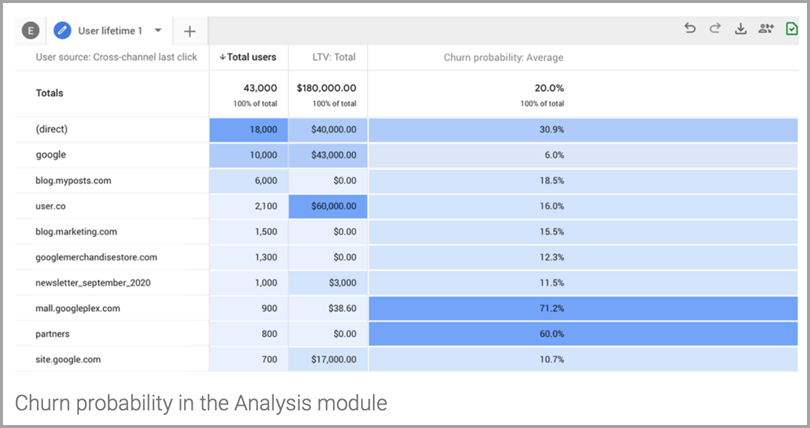
Website traffic is essential for growing a business. More online traffic means more opportunities for your business to build relationships, leave an impression, and increase sales.
The majority of marketing professionals find the process of increasing website traffic to be difficult. According to HubSpot, 63% of marketing professionals reported that their top challenge is generating traffic. Common obstacles include maintaining a user-friendly website, keeping up with Google’s algorithm changes, high competition, and more.
However, when a marketing team knows what to focus on and what to avoid, they find it’s easier to improve website traffic. Let’s explore four potential reasons why your website traffic isn’t growing and how to improve these areas.
1. You aren’t using the latest Google Analytics
Google Analytics is the premier service for website tracking and is one of the most important tools for mastering SEO. In order to improve your website traffic with this service, you have to know which metrics to track, how to find them, and what the numbers mean. One way to learn is through Google’s Analytic Academy Courses, which teaches users how to leverage the service to its fullest potential.
Marketers also need to make sure they are using the newest version of Google Analytics. The most recent version is Google Analytics 4, which came out in October 2020. This latest update includes advancements in machine learning models for trend prediction and better insights.
Google Analytics 4 automatically calculates and alerts you of significant trends in your data – such as a product seeing a rapid increase in sales. This latest version can also predict future customer action. This includes the ability to automate churn probability, which allows your business to anticipate a potential loss of customers so you can invest in retaining them.

Do yourself a favor and consult a Google Analytics guide to learn about setting up Google Analytics 4 for new and existing accounts. This guide can help your business get started with website tracking on Google Analytics.
2. Your glitches aren’t getting fixed
Common glitches such as slow loading speeds, error pages, and unresponsive features could lead to high bounce rates and in turn, lower rankings on search engine result pages (SERPs). Glitches leave a sour taste in consumers’ mouths and reduce the chances of them returning to the website.
User experience (UX) makes or breaks website traffic. In fact, it takes only 1/20th of a second for a visitor to decide if they enjoy a website. If customers experience glitching, they might assume the company does not care to provide quality service.
On the other hand, a positive UX can increase potential traffic. Roughly 23% of customers who have a positive UX tell 10 or more people about it.
To avoid glitches, be sure to run regular tests on your web pages and check for issues such as HTML problems, 404 errors, and loading speeds. Tools such as Google Webmaster can be used to monitor your website’s health. Additionally, Google Analytics can also be used to identify the pages performing poorly – which may indicate glitching.
3. Your site is compromised
Another factor that could be interfering with your online traffic may stem from issues regarding your site’s security.
When your website is compromised in any way, Google will ping your site and warn potential visitors to stay away. For instance, Google may display warnings like “This site may harm your computer” on the SERPs.
Compromised security could mean that data collected from your website, such as customer payment information, is vulnerable.

For companies that operate primarily online, it is recommended to look into cloud computing for peace of mind – both for internal and customer-facing processes. When looking into added website protection, check that you have the latest SSL certification. An SSL certification enables websites to go from an HTTP to HTTPS, which is more secure.
4. Your mobile setup stinks
According to a study conducted by Yokoco, mobile users are 5 times more likely to abandon a site if it is not optimized for mobile. For many businesses, a lot of traffic comes from mobile visitors.
Quality mobile UX is vital for SEO. To make certain that your mobile website is up to par, start by pinpointing potential issues by checking its rating with tools such as Google’s Mobile-Friendly Test.
Example of a Google mobile-friendly test result:

Businesses need to keep in mind that websites require a different layout for mobile and desktop – not just a shrunk down version. Too much text, large images and moving elements don’t translate well on mobile devices. You need to create an edited and well-organized version for mobile devices, especially because it drives the majority of online traffic.
Conclusion
There are many ways to increase website traffic. Focusing on these 4 strategies are great starting points.
Integrating the latest version of Google Analytics helps businesses better understand their current and future online traffic. Google Analytics 4 gives marketers the data required to make necessary improvements for both retaining and generating customers.
Making certain that your website is free from glitches and is user-friendly on both desktop and mobile devices will do a lot to improve traffic numbers, too. Customers decide if they enjoy a website in the first seconds of visiting. If they experience poor UX, they will likely not return.
Lastly, businesses should prioritize online security. Google could flag your website if it was to be attacked, which will certainly deter customers.
Hopefully, this post will put you on a good path to increasing those traffic numbers.
Guest author: Manish Dudharejia is the President and Founder of E2M Solutions Inc, a San Diego Based Digital Agency that specializes in Website Design & Development and eCommerce SEO. With over 10 years of experience in the Technology and Digital Marketing industry, Manish is passionate about helping online businesses to take their branding to the next level.
The post 4 Reasons Your Website Traffic Isn’t Growing appeared first on Jeffbullas's Blog.
source https://www.jeffbullas.com/website-traffic-not-growing/
No comments:
Post a Comment